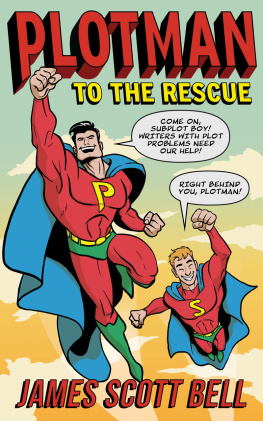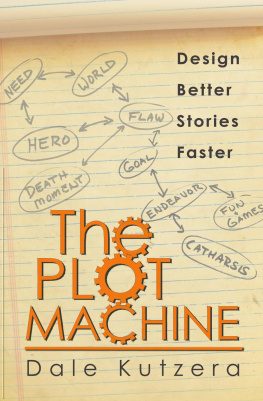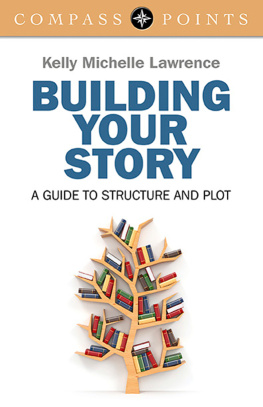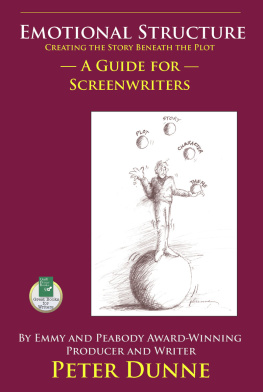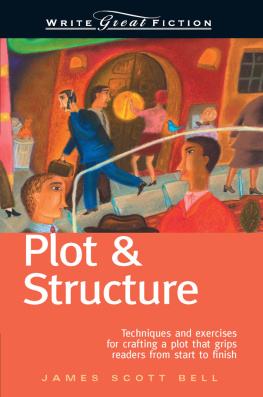
Copyright 2014 by Ross Hockrow.
All rights reserved.
Published by:
Amherst Media, Inc.
P.O. Box 586
Buffalo, N.Y. 14226
Fax: 716-874-4508
www.AmherstMedia.com
Publisher: Craig Alesse
Senior Editor/Production Manager: Michelle Perkins
Assistant Editor: Barbara A. Lynch-Johnt
Editorial Assistance from: Carey A. Miller, Sally Jarzab, John S. Loder
Production Assistance from: Jeff Medford
Business Manager: Adam Richards
Marketing, Sales, and Promotion Manager: Kate Neaverth
Warehouse and Fulfillment Manager: Roger Singo
ISBN-13: 978-1-60895-587-9
Library of Congress Control Number: 2013905051
10 9 8 7 6 5 4 3 2 1
No part of this publication may be reproduced, stored, or transmitted in any form or by any means, electronic, mechanical, photocopied, recorded or otherwise, without prior written consent from the publisher.
Notice of Disclaimer: The information contained in this book is based on the authors experience and opinions. The authors and publisher will not be held liable for the use or misuse of the information in this book.
Check out Amherst Medias blogs at:
http://portrait-photographer.blogspot.com/
http://weddingphotographer-amherstmedia.blogspot.com/
Table of Contents









O nce upon a time... When we see those words appear on a movie screen or read them in a book, we know we are in for a great story. More than just words, this phrase functions almost like a brand; over time, we have been trained to hear once upon a time and think story.
Lets put aside the story for a moment and begin to analyze the why of the above statement. Things dont stop with once upon a time. In fact, stories are such a significant part of our daily lives that they are nearly ingrained in our DNAwhether youre The Grinch Who Stole Christmas or Mr. Jolly-Go-Lucky. Dont believe me? Lets examine.
Frosty the Snowman, the Easter Bunny, Santa Claus, the Tooth Fairy, the boogie manwho are these characters? And why do we almost instantly, without even a moments thought, know the entire back story of each fictional figure when we read their name? Its because early in our lives we were told stories about them. Some were more intricate than others, but we always believed every word. In fact, it wasnt even belief, it was knowledge.
I can think back to being 10 years old and rationalizing that Santa Claus must be real because theres no way my parents could afford all those gifts. The greater impossibility, in my mind, was the idea that he was fictional, not that he was real. I was too young to understand the concept of a credit card, or money for that matter. The point is, I wanted to believe it was realjust like everyone else did. (And this is not just a few of us; we live in a nation so obsessed with the legend of Santa Claus that weve built a billion-dollar industry around it. That is the power of stories.) Santa Claus hardly stands alone, eitherthere are plenty more like him. So why is this?
Consider a time before humans could read or write. Did we just look at each other and use telepathy to transmit our knowledge? At one point, stories were how we communicated our experience and history. It was so effective that we still rely on this method today. Before your child can read or write, they learn through the stories you tell them. Timmy, please dont ever touch the stove when its red like that. Do you think that statement alone would teach Timmy not to touch a hot stove? Of course not. Mom had better have a story to support that statement (or Timmy will make up his own). This is where it starts.
Stories come from mankinds undying need to explain things.
As young children, we want explanations. Its not enough that Santa brings us presents every Christmaswe must know more, and so the story grows. How does he get to our house, Mom? (We have the birth of the reindeer and Santa sliding down the chimney.) Where does he get all the toys, Mom? (Here come the Elves and the North Pole!) See what happens? Stories evolve based on the questions asked.
That one powerful word (Why?) sends us down the rabbit hole. Stories come from mankinds undying need to explain things.
From that, it follows that stories are an effective way to deliver a messagesomething the entertainment industry and media know well. Consider the news. Have you ever wondered why they call it a news story rather than the news facts? It is because the information is presented in a way designed to trigger the viewers emotions and make the facts feel personal. When its done well, it hits that inner storyteller button in your brain. What is the goal? To make sure you do not change the channel. Its that simple.
Storytelling is a collaboration between the storyteller and the story seeker. When your brain is fed information, it immediately starts piecing together the facts to create a story. In fact, your brain is always telling itself a story. If you dont believe me, put this book down and take a nap. When you wake up, write your dreams down in a notebook. Then read it back to yourself. Ridiculous, right? A dream is a story that your brain tells itself. In this case, you are the storyteller of the dreamwhich means that telling other stories is well within your grasp as a human. Storytelling is like an instinct for the human mind.
We all love a good ghost story, right? Some of us believe in ghosts and some do not, but at one point or another, most of us have felt like weve seen a ghost. Without ghost stories, we probably wouldnt arrive at the same conclusion.
Allow me to bring a little science to the argument. Sensory deprivation is the deliberate removal of stimuli from one or more senses. This can happen as a result of damage to one of the sensory organs, but the same effect can also be created temporarily as a form of therapy. In a sensory deprivation tank, for example, you are placed in a water tank in the dark. In this environment, you cannot hear, see, smell, or tasteyou are only feeling the water. As the sensory input is removed from the equation, your mind begins to compensate. This often results in hallucinations.
Next page

